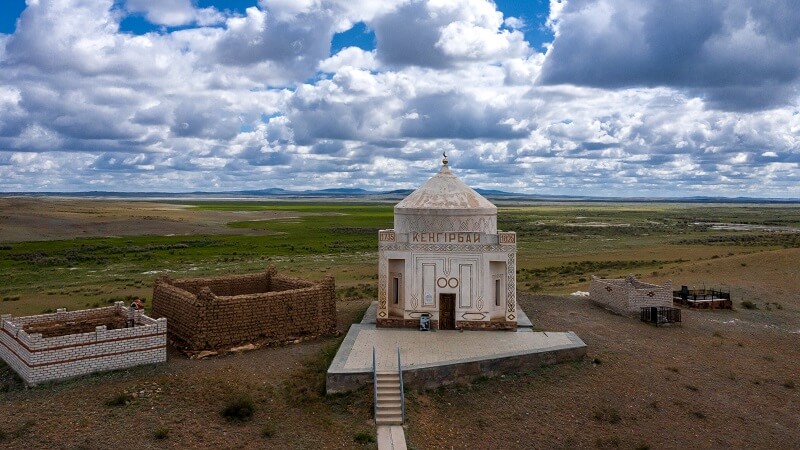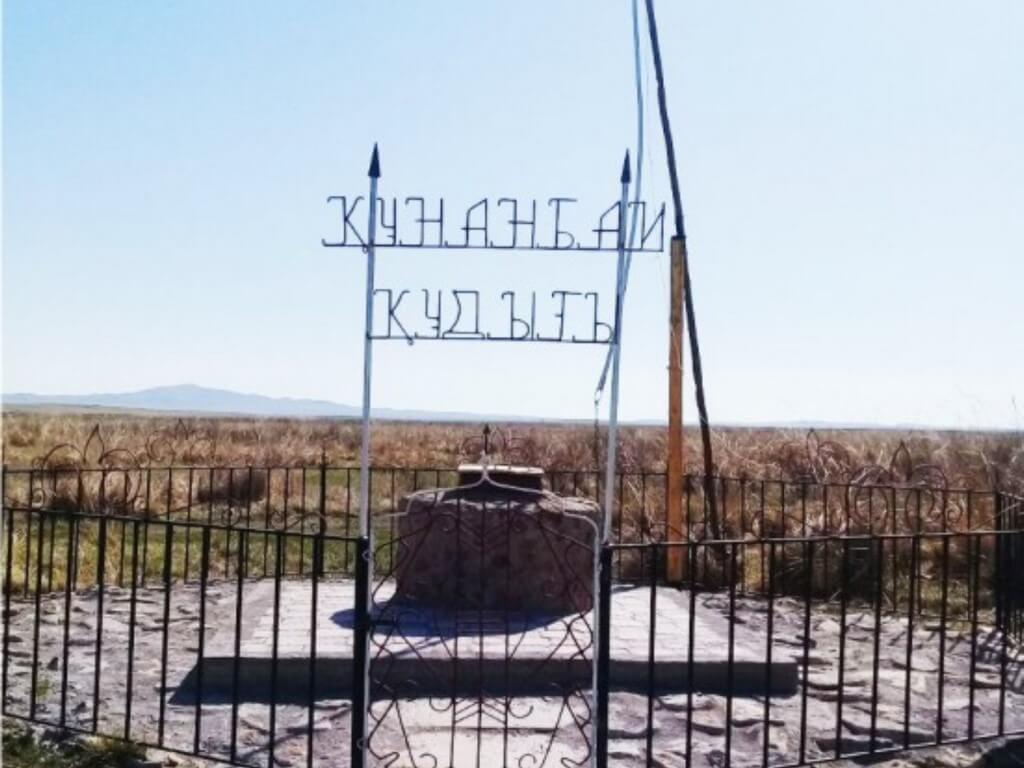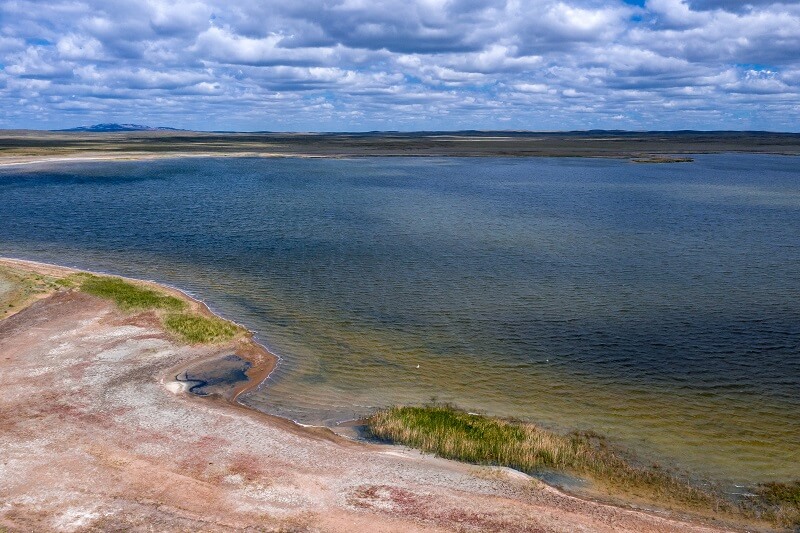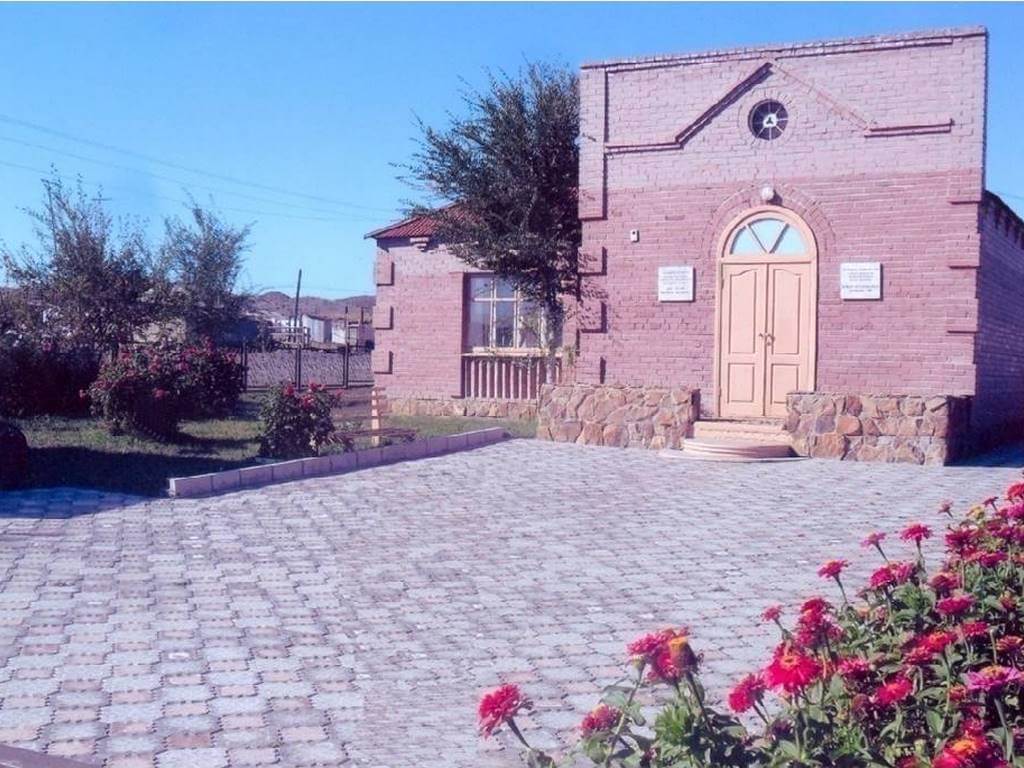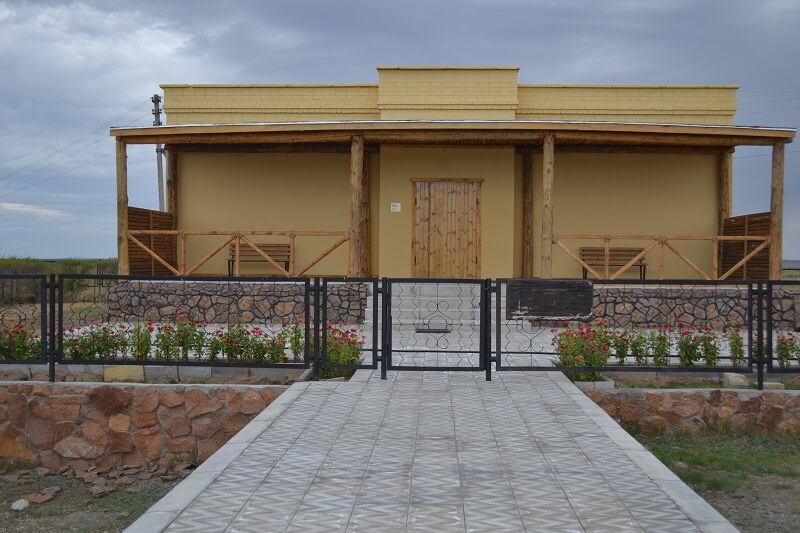Erkezhan cemetery is located not far from Abai mausoleum, in Zhidebai reserve. 23 km south of Karaul village. Erkezhan is the daughter of Shaki, a descendant of Esbolat. Erkezhan was married to Ospan, Kunanbai’s youngest son. She and Ospan did not have any children of their own, so Akylbay’s eldest son Aubakir and Pakizat were brought up by their brothers. After Ospan’s death, Abai married Erkezhan according to the tradition. Relatives rewarded Erkezhan for his courage and restraint. The image of Erkezhan is described in M. Auezov’s novel “The Path of Abai”. As a monument to the beginning of the XX century, Erkezhan cemetery was included in the state list of cultural and historical monuments of local significance by the resolution of the Akimat of the East Kazakhstan region dated April 25, 2008 №560.
Aset Naimanbayevich Museum was opened on 5April 26, 1992 in Makanchi village of Urjar district on the eve of the 125th anniversary of the poet in accordance with the resolution of the Council of Ministers of the Kazakh SSR of March 19, 1990 № 114. The building is made of one-story brick. It was built around 1950. Initially, the house housed a kindergarten, then the Makanchi district department of social security. From 1998 to 2004, with the support of the district administration, the building was overhauled, and in 2004 the Aset Museum was completely relocated to this building. The interior of the museum is divided into 14 rooms. There is an exhibition hall, assembly hall, 2 exhibition halls, library, archive, fund room, staff room, workshop. The old museum house was demolished and its yard was added to the yard of the current building.
By the decree of the East Kazakhstan regional akimat of April 25, 2008 No. 560, the Kengirbay bi mausoleum was included in the State list of historical and cultural monuments of local importance. Kengirbai (1735-1825) – from the Zhigitek clan, bi. He was born on the banks of the Kengir River in South Kazakhstan. Earlier, the mazar was cone-shaped, built of mud bricks. The tomb of Kengirbai bi was built by Kunanbai Uskenbaiuly. The monument was built in the first half of the 19th century. The tomb of Kengirbay Bi is located in the Zhidebai nature reserve, on an elevated hill, lined with unprocessed bricks. Later, the grave was sheathed outside with Mangistau stone, modeled on the architecture of Western Kazakhstan. The total height of the monument is 9.5 meters.
The tomb of Kokbai Zhanataiuly is a monument of history and culture of local significance. It is located in Takyr village of Kokbai rural district of Abai district of East Kazakhstan region near the madrasah where Kokbai once taught. Kokbai’s grave was built in 1926. In 1994, with the support of the community of Kokbai village of Abai district, a mausoleum was built at the head of the poet’s cemetery. The mausoleum is decorated with Mangystau limestone and modern architecture. The author is Sain Nazarbekov.
Kudaiberdi cemetery is located in Zhidebai reserve near the cemeteries of Zere and Ulzhan. Kudaiberdi is the son of Kunanbai from Kunke. According to his contemporaries, Kudaiberdi was a highly respected man in the country due to his high moral qualities. He got married early and had a large farm. He was always engaged in household and family work. That’s probably why Kunanbai didn’t involve him in governing the country. Kudaiberdi’s first wife Dametken gave birth to Murtaza, Shakhmet and Shakarim. His second wife Bobetai gave birth to Ainur, Zhylkyaidar and Yryzdykbai. Kudaiberdi died in 1886. He was buried in Zhidebai. Abai mourned for Kudaiberdi. In 2006, a marble tombstone was erected in Kudaiberdi cemetery.
Kunanbai well was included in the state list of historical and cultural monuments of local significance by the resolution of the East Kazakhstan region akimat of April 25, 2008 60560. It is located 120 meters from Abai’s museum house in Zhidebai reserve. Kunanbai Uskenbayiuly was Abai’s father, the elder sultan, a bolys and a ruler of the country. The well was dug in Zhidebai during the winter. Zhidebai’s settlement will be taken over by Ospan after his marriage. In 2017, the territory of the monument “Kunanbai well” was fenced and the road to the well was restored.
After the abolition of serfdom in Russia, organized by the Russian authorities and spontaneously, a large number of landless peasants began to flow into the territory of Kazakhstan. In many parts of Kazakhstan, there are settlements to deal with the problems of migrants. The Russian barn is the location of the settlements of the peasants who migrated to the Kazakh steppes during the settlement period. At present, only mounds and dwellings are preserved there. The epic of M. Auezov’s novel “The Path of Abai” describes the migration of Russian peasants to the Kazakh lands and their assistance to the poor Kazakhs. Russian barn is a monument of history and culture of local significance according to the decree of April 25, 2008 № 560. The area inhabited by the settlers was very fertile, with green grass.
In 1885 the settlement of Zhidebai was inherited by Ospan. The lake was named after Ospan because it was owned by him. The lake is located in the southwestern part of Zhidebai Nature Reserve. It is impossible to go from the east side of the lake, because its territory was swampy and muddy. The water of the lake is bitter. Mukhtar Auezov’s novel “The Path of Abai” also mentions Lake Ospan. The lake is called “Boktykol”. Ospan is the youngest son of Kunanbai, Abai’s younger brother. Kunanbai gave the territory of Zhidebai reserve to Ospan during the distribution of land to his sons. He died early. During the repressions, Abai’s descendants were expelled from their homeland, including Aubakir. When Aubakir left his homeland, he wrote a poem about his homeland, which also mentions a lake in his homeland.
Ulzhan-Zere cemetery is a monument of history and culture of local significance. Zere is the godmother of Uskenbai bi, the mother of Kunanbai Haji, the great mother of Abai. Zere was called “Old grandmother” by the descendants of Irgyzbai and all the villagers. Ulzhan (1810-1887), Kunanbai’s second wife and Abai’s mother, was the daughter-in-law of Zeredey, who was buried with his mother for many years. Zere and Ulzhan, who had a kind heart, cared for the elder and took refuge in the younger, had a positive impact on the life and poetry of Abai. In 1873 Kudaiberdi and Abai’s grandmother Zere (1785-1873) were buried in the cemetery in Zhidebai. In 1887, Abai’s mother Ulzhan was buried in this cemetery. The burial mound, built of raw bricks, fell into disrepair. In 1986, a stone tomb was erected for Zere and Ulzhan, and a hexagonal mausoleum with an Oriental pattern appeared at the top of the mother’s grave. In 2006, the mausoleum was surrounded. In 2020, the road to the cemetery and the fence were restored.
Shakir Abenuly’s natural talent was nurtured by folklore traditions, examples of written literature, teaching of classical heritage and Abai’s poetic culture. Shakir Abenuly is an expert on folk literature, an old genealogist, folk poet, composer and musician, who lived in the sacred region of Shyngystau for almost a century. Shakir Abenuly is a poet who in 1991 congratulated and blessed the First President of the Republic of Kazakhstan – President Nursultan Nazarbayev. In 2002, the house of the poet in Kundyzdy village of Abai district was included in the Abai Museum, and reconstruction and exposition work was carried out. On October 24, 2003, the Shakir Abenuly Museum was opened. The museum consists of 5 exhibition halls depicting the life and work of the poet. It is included in the state list of monuments of culture and history of local value by the resolution of the akimat of the East Kazakhstan region from April 25, 2008 №560.
Zhidebai Nature Reserve is located in Abai district of East Kazakhstan region in the village of Zhidebai, which belongs to the State Historical-Cultural and Literary-Memorial Reserve-Museum of Abai “Zhidebai-Borili”, 180 km from the city of Semey. There is a special sign on the Semipalatinsk-Karaul highway at the turn to Zhidebai. The museum “Shakarim’s Sayat kora” was opened in Zhidebai reserve on November 16, 2006 on the eve of the 150th anniversary of Shakarim Kudaiberdiuly. The museum building was built in 2000 by the order of the akim of the East Kazakhstan region.
Sayat Kora is the last settlement of the honored poet of the Kazakh people Shakarim Kudaiberdiuly. This is a sacred place, where the poet left the country and became the basis for the birth of immortal works, historical, philosophical and poetic works.
The exposition of the museum is the current state of Shakarim’s Sayat kora at the top of Karabulak hill. Each brick pattern drawing of the walls was also taken as a basis. In 2020, the museum building underwent a scientific-restoration, re-exposition of its historical version, supplemented with new facts and exhibits about the life and work of the poet.



